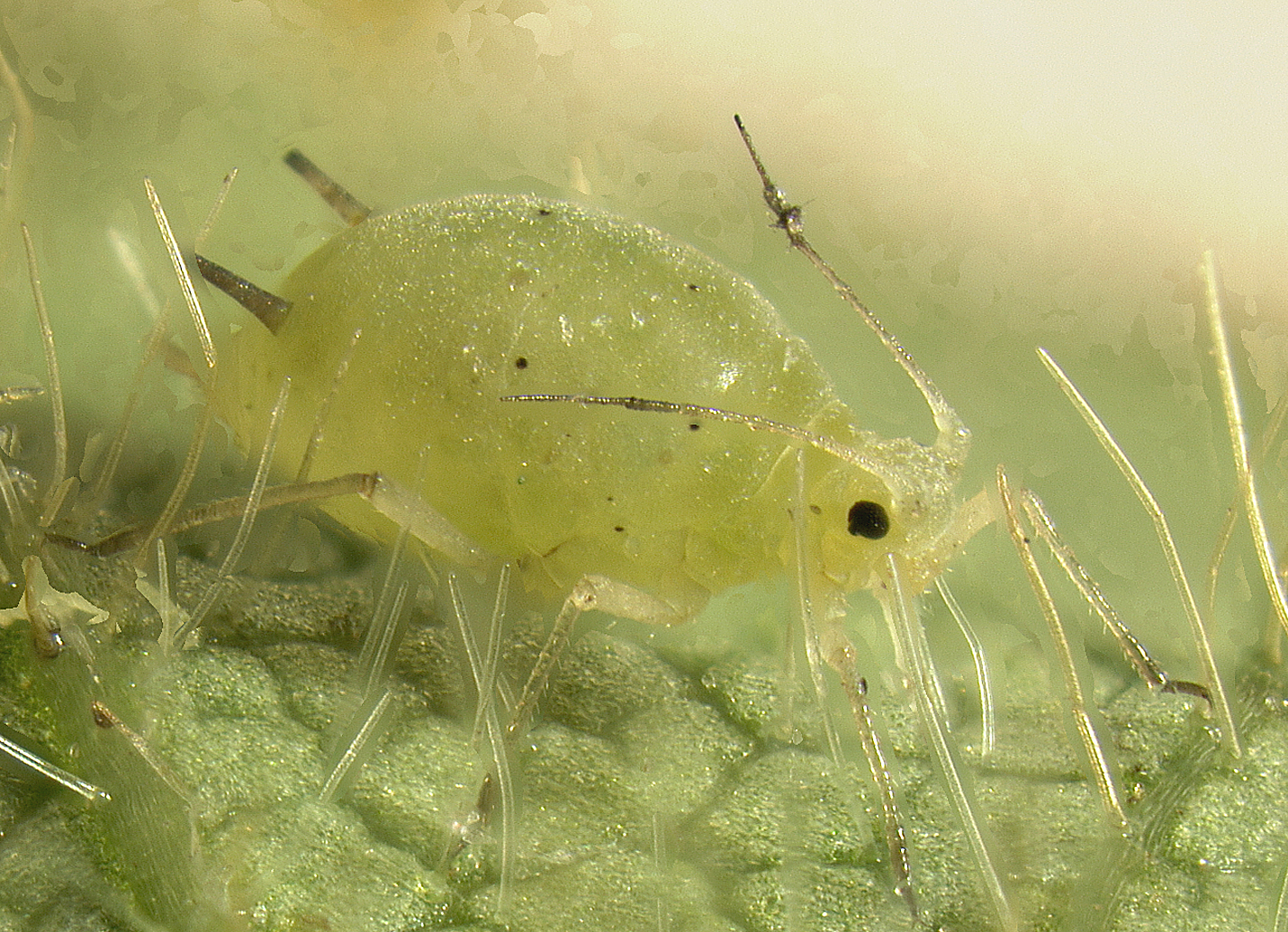One morning in mid-July, I was having coffee on the screened-in deck, enjoying the beautiful summer day when a loud single-engine airplane swooped over my house. It sounded way too close for comfort. It zoomed around the soybean fields that surround Owl Acres, coming and going, making several passes over the fields before flying away. The pilot had to maneuver around the power lines, flying as close to the ground as was feasible. At one point he actually flew under the power lines. The pilot’s job is to spray the field with pesticides while not spraying my house.
Soybeans are a major crop in Iowa, and they’re spraying for soybean aphids (Aphis glycines) and a fungus that’s associated with the aphids.
The soy bean aphid, like the soy bean itself, is native to Asia. The aphids were first discovered in the United States in 2000 and have since spread to most states where soybeans are grown, including Iowa.
Their lifecycle is amazingly complex, and they require two specific plants to survive—buckthorn and soybean. I have to wonder how an organism evolves such a crazy life cycle, but somehow they do. It goes like this.
In the first stage, they hatch from eggs laid on buckthorn. The hatchlings go through four nymphal stages getting bigger, molting, (shedding their exoskeleton) four times. The last time they molt, they’re about a sixteenth of an inch long with tiny yellow bodies and distinctive black things sticking out of their bodies (called cornicles). They use the cornicles to secrete defensive chemicals and pheromones. At this point, they are adult wingless females. These females bear live, winged female aphids which, after they grow up, fly off to find a soybean field. In the soybean field, these winged aphids start sucking the juice out of the soybean leaves with their little needle-nosed suckers. This can damage or kill the plant. They also start cloning themselves by giving birth to live, wingless babies which have only the mother’s genetics through asexual (parthenogenetic) reproduction. But no wings. It takes only about 1.3 days for these nymphs to grow up and start reproducing the same way. Over the course of a summer, up to 15 generations of wingless female aphids can occur in a field. In some cases, the population can double within a couple of days.
When winter is coming, and the soybeans are getting tired, the days get shorter, and temps decrease. The last generation of the wingless females take these cues and change their plans. They give birth to a new generation of winged females who hightail it back to the buckthorn. There, the winged females give birth to another generation of aphids, this time wingless sexual females who can mate and lay eggs. These females lay down sex pheromones to guide the males to them so they can mate. The males were produced by the last generation of soybean aphids in the soybean field, and they fly off to find those pheromones and mate with the females. The females then lay their eggs on the buckthorn plants where they overwinter. Because they evolved in northern climates, they don’t really mind cold winters and are ready to hatch and start it all over when the weather warms up to 50 degrees or so. Now, who invented such an odyssey to get from one egg to the next? Why this long and complicated lifecycle? Their programming must be crazy complex to know when to produce what and whether to be winged or not, male or female or not, sexual or not.

Circle chart depicting the numerous stages of soybean aphid lifecycle. Chart by: David Voegtlin
Aphids not only suck the juice out of the leaves, but they leave behind a sticky sugary film called honeydew. The honeydew attracts ants and also a fungus referred to as a sooty black mold. The ants aren’t a problem for the soybeans, but the mold can kill the plants.
Multicolored Asian lady beetles, also imports from Asia, would be very happy to eat the aphids but my guess is that the pesticide coming out of that airplane will have the same effect on the beetles that it has on the aphids. I haven’t seen many around lately.
Photo by Claudio Gratton Alt text: Light green, bulbous insect with tiny head, black eyes, and rakish, black-tipped antennae swept back over its head, sits on a green leaf surface. Soybean Aphid

2 comments